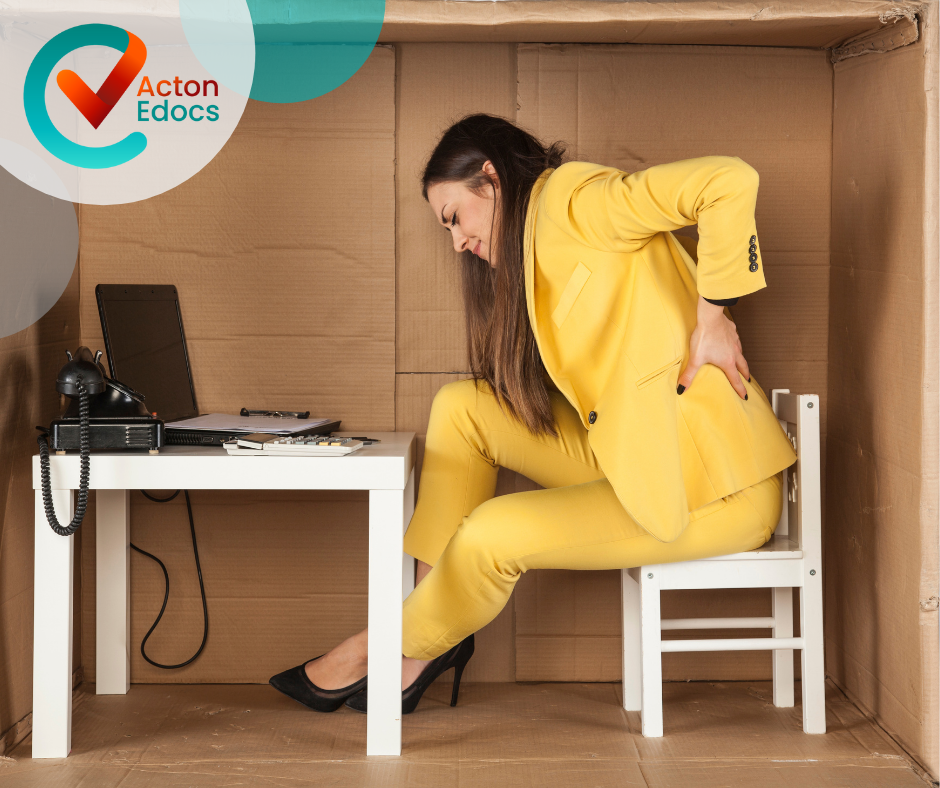
Around 1.2 million people report suffering with back-related aches and pains from work each year. Any number of factors can contribute to back problems, and the effects they cause can range from very mild, to incredibly serious, so it is important to catch these symptoms and their root cause early in order to prevent serious health issues further down the line.
What can cause back pain?
Many different types of work and activities lend themselves to back pain; from desk-based work, to warehouse management, to heavy goods driving. The list of possible factors for each specific type of work would be quite long, so we’ll keep it brief with a few common causes:
- Posture. Slouching, over-stretching across your workspace, or working at an angle can wreak havoc on your spine and back muscles over time.
- Lifting and Handling. Carrying heavy items repetitively, or for prolonged periods of time can cause immediate or gradual spinal and muscular problems.
- Environment. If your working area is cramped, or your work involves sitting in the same position for a long time, the inability to stretch or move around can present issues at any time.
- Tiredness. Working after a lack of sleep can cause muscle pains and further damage over time, especially in jobs involving a lot of manual labour.
What can I do about it?
If back pain begins to manifest, ignoring it could make it considerably worse if the root cause isn’t identified and dealt with. However, there are some small things you can try to help alleviate the symptoms as they appear.
Staying active is important; while it may not be comfortable at first, moving around, or even maintaining an exercise regimen, can help to significantly reduce the effects of back problems over time.
To complement exercising, simple back stretches can be a good step towards fixing back pains. It may be best to speak to your GP, or a physiotherapist, in order to get the full picture on what kinds of stretches would benefit you most.
Compression packs and painkillers can help to temporarily alleviate the symptoms. While they are not a permanent solution, they can help to get you back to stretching and exercising without as much pain.
If nothing seems to work, and your back pain does not appear to be getting better in any way, then it is best to seek professional medical advice.
How can I prevent it in the future?
There are a few measures you can put in place in order to help to mitigate the chance of back problems rearing their head:
- Identify the root cause, and see if it can be avoided or changed
- Keep good posture when sitting for long periods; not slouching, arms positioned comfortably, avoid twisting or turning where possible
- Take time to stretch and walk around where possible, to avoid remaining in the same position for too long
- Follow manual handling guidelines and procedures for carrying heavy items; bend from the knee, keep your back straight, don’t lift the item above your head etc.
- Report signs of back pain early to your employer to implement a fix as quickly as possible.
The earlier back issues are identified, the faster they can be treated appropriately, and the quicker you can get back to being pain free. For more articles on health and safety in the workplace check out some of our other articles, at: Acton E-Docs | Blog
